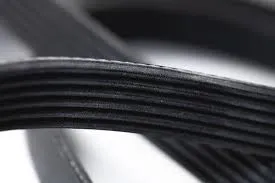- Arabic
- French
- Russian
- Spanish
- Portuguese
- Turkish
- Armenian
- English
- Albanian
- Amharic
- Azerbaijani
- Basque
- Belarusian
- Bengali
- Bosnian
- Bulgarian
- Catalan
- Cebuano
- Corsican
- Croatian
- Czech
- Danish
- Dutch
- Afrikaans
- Esperanto
- Estonian
- Finnish
- Frisian
- Galician
- Georgian
- German
- Greek
- Gujarati
- Haitian Creole
- hausa
- hawaiian
- Hebrew
- Hindi
- Miao
- Hungarian
- Icelandic
- igbo
- Indonesian
- irish
- Italian
- Japanese
- Javanese
- Kannada
- kazakh
- Khmer
- Rwandese
- Korean
- Kurdish
- Kyrgyz
- Lao
- Latin
- Latvian
- Lithuanian
- Luxembourgish
- Macedonian
- Malgashi
- Malay
- Malayalam
- Maltese
- Maori
- Marathi
- Mongolian
- Myanmar
- Nepali
- Norwegian
- Norwegian
- Occitan
- Pashto
- Persian
- Polish
- Punjabi
- Romanian
- Samoan
- Scottish Gaelic
- Serbian
- Sesotho
- Shona
- Sindhi
- Sinhala
- Slovak
- Slovenian
- Somali
- Sundanese
- Swahili
- Swedish
- Tagalog
- Tajik
- Tamil
- Tatar
- Telugu
- Thai
- Turkmen
- Ukrainian
- Urdu
- Uighur
- Uzbek
- Vietnamese
- Welsh
- Bantu
- Yiddish
- Yoruba
- Zulu
ኅዳር . 16, 2024 19:03 Back to list
Neoprene Timing Belt Advantages and Applications for Enhanced Performance and Durability
Understanding Neoprene Timing Belts A Key Component in Mechanical Systems
Neoprene timing belts play a critical role in various mechanical systems by providing a reliable method for transmitting power and maintaining synchronization between different components. Made from polychloroprene rubber, these belts exhibit excellent resistance to heat, abrasion, and oil, making them suitable for demanding applications in automotive, industrial, and manufacturing settings.
One of the most significant advantages of neoprene timing belts is their ability to maintain precise timing between gears and pulleys. This precision is crucial in systems where exact timing is essential for optimal performance, such as in engines where the timing of the valves must align perfectly with the piston movements. The teeth on the belt engage with corresponding grooves on the pulleys, preventing slippage and ensuring that the system operates smoothly and efficiently.
Neoprene timing belts are known for their durability. They can withstand high tensile forces and can maintain their structural integrity over time, even when subjected to varying temperatures and environmental conditions. This durability translates into lower maintenance needs and longer service life compared to other types of belts, which is particularly advantageous for industries that rely on continuous operation, such as manufacturing and automotive.
neoprene timing belt

In automotive applications, neoprene timing belts are essential components of the engine drive system. They not only drive the camshafts but also help in driving other accessories, such as water pumps and alternators. Regular inspection and timely replacement of these belts are crucial, as a failure could lead to severe engine damage. Most manufacturers recommend replacing timing belts at specific intervals, typically between 60,000 and 100,000 miles, depending on the vehicle model and driving conditions.
Beyond automotive uses, neoprene timing belts find applications in industrial machinery, robotics, and conveyor systems. These belts can be custom-designed to meet specific operational requirements, such as varying lengths, widths, and tooth profiles. This versatility has led to their widespread adoption across various sectors, including packaging, food processing, and textile manufacturing.
Furthermore, the manufacturing process of neoprene timing belts has evolved significantly over the years. Advanced techniques enable the production of belts with enhanced performance characteristics. For instance, incorporating reinforcement materials, such as fiberglass or aramid fibers, into the belt design can further increase tensile strength and improve resistance to wear and tear.
In conclusion, neoprene timing belts are indispensable components in many mechanical systems due to their durability, precision, and versatility. Whether in the automotive industry or various industrial applications, these belts ensure efficient and reliable operation. As technology continues to advance, the design and performance of neoprene timing belts will likely improve further, reinforcing their importance in modern mechanical engineering. For anyone involved in procurement or maintenance of such systems, understanding the benefits and applications of neoprene timing belts is essential for ensuring optimal performance and longevity.
-
Premium Custom V Belts Enhanced with GPT-4 Turbo AI
NewsAug.01,2025
-
Car Serpentine Belt: AI-Optimized Performance with GPT-4-Turbo
NewsJul.31,2025
-
Heat Joining Drive Belt | High-Durability Fusion Solution
NewsJul.31,2025
-
Timing Belt Video Guide: Selection, Design & Quality Insights
NewsJul.30,2025
-
High-Performance Variable Speed V Belt Drive for Efficient Power Transmission
NewsJul.30,2025
-
High-Quality 90 Inch Serpentine Belt - Durable & Versatile Options
NewsJul.29,2025

